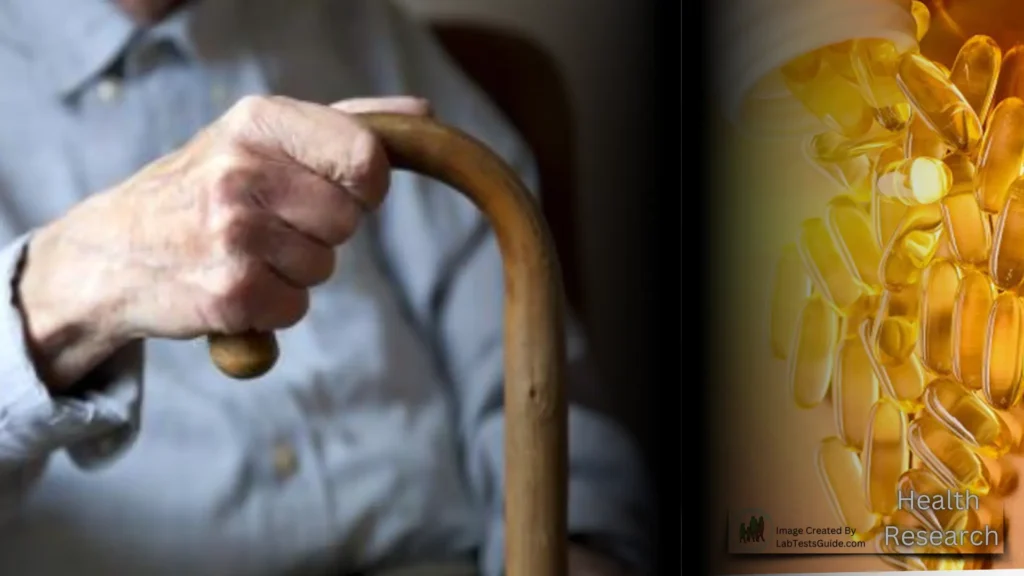Experts Say Vitamin D and Calcium Supplements Won’t Prevent Falls and Fractures in Older Adults
Taking vitamin D and calcium supplements, long thought to support bone health, does not reduce the risk of falls or fractures in older adults living independently, according to the latest recommendations from the U.S. Preventive Services Task Force (USPSTF). The findings mark a significant shift in the approach to fall and fracture prevention for aging populations.

Key Findings
The USPSTF reviewed evidence from 20 randomized clinical trials involving older adults and found no significant benefit of vitamin D and calcium supplementation in preventing falls or fractures. The pooled risk ratio for fractures and falls was nearly identical for those who took the supplements and those who did not, offering no meaningful difference in outcomes.
“This is one of the rare instances where the evidence is so clear,” said Dr. John Ruiz, a clinical psychologist and member of the Task Force. “The data show no benefit in terms of fracture prevention.”
Scope of the Recommendation
The new guidelines apply to men aged 60 and older and postmenopausal women who are living independently. These findings exclude individuals in nursing homes or assisted living facilities and those with specific medical conditions like osteoporosis or severe vitamin D deficiency.
While vitamin D and calcium are essential nutrients, the evidence suggests their supplementation does not prevent the falls and fractures that pose significant health risks for older adults.
Risks and Harms
The USPSTF highlighted a small risk of harm, such as kidney stones, associated with calcium supplementation. However, no major adverse effects were linked to vitamin D alone when taken at recommended levels.
Effective Alternatives
Experts emphasize that physical activity and regular screenings are more effective in preventing falls and fractures. Strength training and balance exercises, such as tai chi or resistance workouts, can enhance muscle strength and coordination, reducing fall risk.
Routine screenings for osteoporosis, particularly for women aged 65 and older, are also critical. Early detection of bone loss can lead to targeted treatments that significantly lower the risk of fractures.
Context and Reactions
The recommendations align with broader findings in recent studies, including a large randomized trial published in the New England Journal of Medicine, which found no benefit in fracture prevention from high-dose vitamin D supplementation.
However, some experts, including Dr. Andrea Wong of the Council for Responsible Nutrition, caution against dismissing the importance of these nutrients entirely. Vitamin D and calcium remain crucial for overall health, particularly for individuals with dietary deficiencies or limited sun exposure.
What Older Adults Should Do
To maintain strong bones and reduce the risk of falls, older adults are advised to:
- Engage in regular strength and balance exercises.
- Get screened for osteoporosis.
- Ensure sufficient dietary intake of vitamin D and calcium.
- Discuss fall risks and any recent incidents with their healthcare providers.
Falls remain the leading cause of injury-related deaths among people aged 65 and older. Preventive measures, like exercise and environmental safety precautions, remain the most reliable strategies to reduce fall-related injuries and improve overall well-being in aging populations.
While vitamin D and calcium supplements are not the answer to fall prevention, focusing on comprehensive health strategies can make a difference.
References
- Taking Vitamin D and Calcium Won’t Prevent Falls and Fractures in Older Adults – Very Well Health – (Accessed on Dec 19, 2024)
- Calcium, Vitamin D Supplements Won’t Prevent Falls and Fractures, Health Panel Says – AARP – (Accessed on Dec 19, 2024)
- US Preventive Services Task Force recommends against vitamin D supplementation for fracture, fall prevention – Medical Xpress – (Accessed on Dec 19, 2024)
- Popular vitamin won’t prevent a fall or fracture in older adults, health panel says. Here’s what can help – CNN – (Accessed on Dec 19, 2024)
Possible References Used






